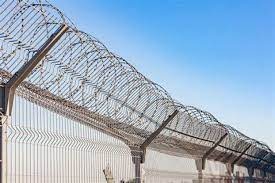10 Undiscovered Treasures in Bikaner
Shrouded in timeless mystery and regal magnificence, Bikaner is a desert city that thrives magnificently in the dry landscape of western Rajasthan while being mostly hidden from the busy tourist routes.

Even while the massive Junagarh fort and the busy Sadar market draw large numbers of tourists, many hidden treasures are still buried behind mostly undiscovered lanes. For history buffs and spiritual searchers who go a little off dusty thoroughfares, there are magnificent treasures preserved from mythical pasts beyond flower merchants peddling fragrant blooms or busy markets selling in spices.
Bikaner is a beautiful place that invites exploration beyond conventional lists, offering everything from trendy rooftop cafés with breathtaking views to ancient ruins that are eternally saturated with a sense of antiquity. Come explore these 10 hidden gems for souls on the verge of awakening and seeking unique experiences.
1. A Walk Through Royal Extravagance in Rampuria Havelis
The only examples of medieval architecture seen in most towns are dilapidated fortresses and small museums, yet amazingly, Bikaner is still home to majestic havelis that epitomize home luxury.
Tucked away in comparatively small roads close to Jassusar Gate is a collection of showy townhouses built in the 19th century by affluent tradesmen in a spectacular Rajput-Mughal style. The collection of exquisitely carved balconies, jharokha galleries, and scandalously stunning artworks representing scenes from Krishna Leela, which are converted from holy knowledge into flagrant sensuality patronized liberally once, may captivate one’s attention for hours on end.
Stroll softly through these antique rooms shrouded in whispered regality, as if you could see noblemen inhaling at elaborate silver hookahs debating silk route intrigues in the grand alleys of Bikaner or royal women peering coyly behind flowery Mehrab screens.
2. Gajner Wildlife Sanctuary Get Together With Magnificent Animals
Most towns restrict nature experiences to well-trod zoo paths, but Bikaner, which is close to the Thar desert, is astonishingly home to a few relatively unknown wildlife sanctuaries that house native treasures away from the bustle of tourists.
The most picturesque of them all is still the Gajner Wildlife Sanctuary, which is spread over sand dunes and has beautiful lakes. It is here that one finds rare migratory birds, such as endangered White-Brown Fantails or exotic Pallas Fish eagles, living in harmony with the lush greenery and sparkling lakes, comparatively unaffected by the noise of commercial eco resorts.
Enjoy once-in-a-lifetime experiences such as seeing the Indian Peafowl’s dance-like mating rituals or stumbling onto playful jackal families at waterholes under magnificent sunset sky. This hidden woodland is Bikaner’s best-kept secret for unusual encounters with local wildlife without following set routes; it is only accessible to awakened eyes prepared to rediscover our tenuous ties with amazing species whose homes and voices are gradually fading.
3. Kote Gate: An Immersion in the Soul of Local Culture
The majority of cities confine historic architecture to dilapidated fortresses and little-known museums, but surprisingly, Bikaner still has a few lively markets that exhibit a provincial pulse that is quaintly divorced from commercial gentrification.
Just a short distance from the Junagarh fort is the somewhat hidden Kote Gate bazaar, hidden behind little blue doors that resemble curtains that open to reveal an oriental souk that has been prospering since the 16th century.
Stroll by stands offering delectable teas, spicy pakoras, and the best lac bracelets to see a manifestation of human civilization surviving happily around food, crafts, and unconditional acceptance that is still common in ancient quarters outside of concrete metropolitan places.
To find examples of timeless old-world charm, spend dull days at Kote market, taking in the atmosphere of laughter, banter, and fragrances without any digital distractions.
4. Stone-carved architectural poetry at Devi Kund Sagar
Within Bikaner’s older sections are some somewhat hidden remnants that take one directly to the sacred world of Rajputana nobles, who honor their historic lineages with magnificent memorial buildings.
Enter the lush Devi Kund Sagar area, which was established in the fifteenth century next to Gogagate Circle, to see the ruins of royal cenotaphs, or chhatris, which were formerly made of finely carved slabs of red sandstone but are now being progressively engulfed by wild greenery.
However, when one walks past partially destroyed pavilions to the central stepwell, there is an unquestionably amazing atmosphere that permeates the space, as though the soil itself is paying tribute to the eternal family glory that is represented by the exquisite chatri burial markers and monuments.
If you look closely, you may see fading friezes that reveal magnificent sculptures hidden behind thick layers of moss, waiting to share relics of the past with those who are willing to bow down in reverence amid the abandoned remains!
5. The Divine Architectural Extravaganza of the Shri Laxminath Temple
The majority of temples maintain a rather modest size, but the amazing Shri Laxminath Mandir stands out for its magnificent and imposing design, which dates back to its building in the 16th century by the Bikaneri Maharajas.
Ascend somewhat hidden lanes to be astounded by exquisite stone carvings that adorn walls and pillared galleries in a fusion of Rajasthani and Mughal designs. These lead to the main shrine, which is glistening with Belgian glass chandeliers, gold columns, and elaborate artwork that almost seems to be reminiscent of former imperial wealth that was once used for divine decor.
However, the temple grounds are unexpectedly still rather peaceful, enabling one to fully immerse themselves in soul-lifting bhajans among gentle flower scents and ringing bells that will hypnotically take you back to a spiritually glorious era.
Even beyond the notable Junagarh fort’s magnificence itself, this historic city jewel is still a visitor’s joy for unearthing hidden architectural treasure troves.
6. Ganga Singh Museum: Peeling Back the Royal Mysteries
When visiting historical sites, most tourists primarily focus on majestic palaces and strongholds, but Bikaner also has interesting museum trails for those who want to learn more about the fascinating past of the city.
The superb Ganga Singh museum is tucked away in the rather hidden Lallgarh palace downtown. It features an impressive assortment of items from the Raj period, spanning decades, that were painstakingly assembled by several Bikaneri Maharajas.
Alongside strange exhibitions like huge dinosaur fossils or a collection of Dutch rose essence, one finds chambers full of weapons from the Mughal period, priceless Pichwai paintings, and jewel-toned medieval clothes, all of which hint to the expansive worldview that the monarchs here fostered.
7. The Temple of Bhandasar, Where Faiths Harmoniously Converge
For true devotees who go outside the usual itinerary, secret shrines provide comparatively secluded serenity and exquisite architecture. Of course, the majority of temple attractions will always be packed with tourists.
One example is the magnificent 15th-century Bhandasar Jain temple, which is situated outside of the village of Bhandasar and is still well-known throughout the world for its exquisite interiors, artwork painted with gold leaf, and the main deity, which is carved out of perfect emerald stone, almost like an architectural poem that beautifully embodies the Jain heritage of reverence towards the natural world.
Remarkably, however, the temple grounds are still quite tranquil, enabling one to fully immerse themselves in soul-lifting bhajans among gentle flower scents and ringing bells, effortlessly transporting oneself back in time into a spiritually illustrious past replete with shared knowledge and tolerance.
8. The Sadul Singh Museum: An Immersion into Royal Legacy
While most museums merely display dead artifacts, Bikaner’s magnificent Lallgarh Palace is housed in a relatively obscure gallery named after Maharaja Sadul Singh. A visit to its small rooms might nearly make you feel like a member of the noble family.
This early 20th century suite, in contrast to the trite Junagarh Fort weapons displays, whisks privileged visitors away to a magnificent world of refined luxury, presenting rare and priceless relics that genuinely belonged to Bikaneri Maharajas, such as paintings, antique automobiles, and unusual trip souvenirs.
The sophisticated individuals behind the power lineage may be seen in the embroidered velvet slippers of Maharaja Ganga Singh or in Yuvaraj Sadul Singh’s collection of German beer steins. Even beyond the notable Junagarh fort magnificence itself, this old-world time capsule remains a visitor’s joy for unearthing relatively unknown jewels and delicious morsels up close.
9. The aquatic haven for feathered angels, Sursagar Lake
Most desert towns restrict leisure to exclusive golf clubs or arid public parks, but Bikaner, which is located close to Thar, is remarkable because it protects a few relatively unknown natural gems and has practiced environmentally conscious site design since the Middle Ages.
The most notable example is the picturesque Sursagar Lake, which was built magnificently in the sixteenth century as a favorite refuge for harem women and as a water reservoir. It has since been further developed into a bustling bird sanctuary.
Amidst the stark sandy terrain that borders the lakesides themselves, early mornings bring flocks of winged transients such as coots, shovelers, and stately ibises that whoosh past the historic cenotaphs, almost skimming gently across shimmering blue waters before disappearing into floating meadow islands that promise unforgettable frames.
Try your hand at kayaking softly past kingfishers to uncover the more unspoiled and less-visited Sursagar area, or try your hand at fishing huge rohu from the shadows of decaying pavilions.
10. Culinary Secrets of Rampuria Street Unveiled
Most towns restrict fine dining experiences to upscale hotel establishments or ostentatious restaurant chains, but surprisingly, Bikaner still maintains traditional restaurant alleys where fragrant kebabs sizzle happily under roadside canopies, offering unique gastronomic delights for connoisseurs.
Imagine walking down relatively empty Old City alleys when, from behind obscured but amazing bustling kitchens that have been churning out heritage cuisine round the clock since the 19th century itself, whiffs of succulent fried meats or sugary desserts mysteriously waft. This is what draws both locals and occasionally tourists to the gastronomic heaven known as Rampuria food bazaar.
Enjoy the unwavering hospitality and timeless flavors created from family heirloom ingredients, reminding you that globalization hardly ever changes some aspects of culture. Chow down on crispy kachoris, try creative fusion falafels, or sip creamy kheers made from century-old Gharana recipes.
Deciphering Durable Cultural Aspects
Bikaner’s unique charm is evident in its remarkable cultural osmosis preserved across neighborhoods, from flower-decked balconies that glimpse the pinnacle of Rajput-Mughal fusion architecture to expansive wild scrublands where majestic Chinkaras still play freely every dawn or hours spent submerged alongside traditional halwais stirring bubbling Kadhai delicacies brimming with aromatic secrets.
All one has to do is give up on planned ideas and travel guides in favor of allowing pleasant surprises guide leisurely city walks full of inspiring historical insights and interpersonal encounters without needless frenziedness.







